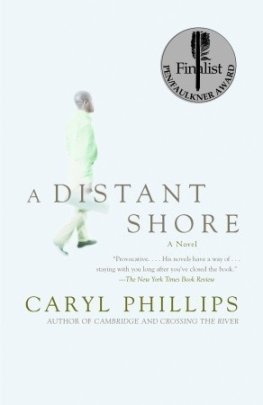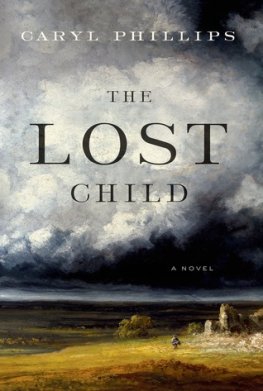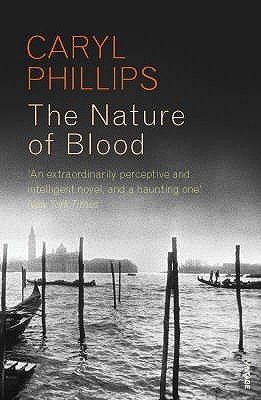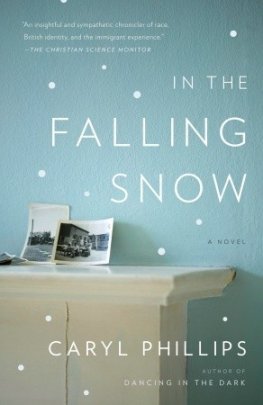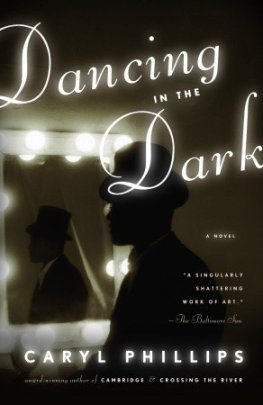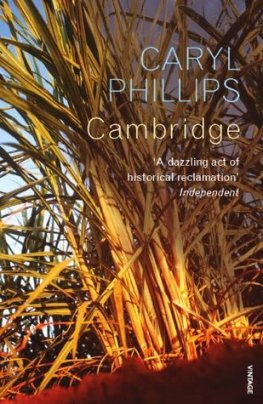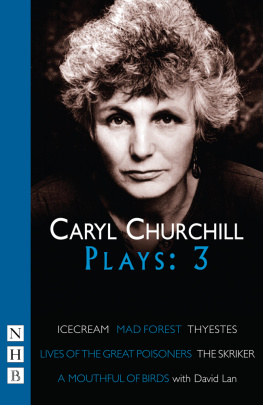
Caryl Phillips was born in St.Kitts and brought up in England. He has written extensively for stage, radio, television and the screen. His first play, Strange Fruit, premiered at the Sheffield Crucible Theatre in 1980, with subsequent productions in London and at the Liverpool Playhouse. Where There is Darkness and The Shelter both premiered at the Lyric Theatre, Hammersmith. In 2007 his adaptation of Simon Schamas Rough Crossings for the stage toured Britain. He has collaborated with Peter Hall, writing and co-producing a three-hour film of his first novel, The Final Passage, for Channel Four, for whom he also wrote the film Playing Away. In 2001 he adapted V. S. Naipauls The Mystic Masseur for Merchant Ivory Films. He is the author of numerous books of non-fiction and fiction. Dancing in the Dark won the 2006 PEN Open Book Award, and A Distant Shore was long-listed for the Booker Prize and won the 2004 Commonwealth Writers Prize. His other awards include the Martin Luther King Memorial Prize for The European Tribe, a Lannan Literary Award, a Guggenheim Fellowship, and the James Tait Black Memorial Prize for Crossing the River, which was also short-listed for the Booker Prize. He is a contributor to newspapers and magazines on both sides of the Atlantic, a Fellow of the Royal Society of Literature, and holds honorary doctorates from a number of universities. His most recent novel, A View of the Empire at Sunset, was published in 2018.

First published in this collection in 2019 by Oberon Books Ltd
521 Caledonian Road, London N7 9RH
Tel: +44 (0) 20 7607 3637 / Fax: +44 (0) 20 7607 3629
e-mail:
www.oberonbooks.com
Strange Fruit Caryl Phillips, 1980, 2019. First published in 1981 by Amber Lane Press Ltd.
Where There is Darkness Caryl Phillips, 1982, 2019. First published in 1982 by Amber Lane Press Ltd.
The Shelter Caryl Phillips, 1983, 2019. First published in 1984 by Amber Lane Press Ltd.
Caryl Phillips is hereby identified as author of these plays in accordance with section 77 of the Copyright, Designs and Patents Act 1988.
The author has asserted his moral rights.
All rights whatsoever in this play are strictly reserved and application for performance etc. should be made before commencement of rehearsal to Judy Daish Associates Ltd, 2 St Charles Pl, London W10 6EG (). No performance may be given unless a licence has been obtained, and no alterations may be made in the title or the text of the play without the authors prior written consent.
You may not copy, store, distribute, transmit, reproduce or otherwise make available this publication (or any part of it) in any form, or binding or by any means (print, electronic, digital, optical, mechanical, photocopying, recording or otherwise), without the prior written permission of the publisher.
A catalogue record for this book is available from the British Library.
PB ISBN: 9781786827906
E ISBN: 9781786827913
Cover image: Haywood Magee/Getty Images
Printed and bound by 4EDGE Limited, Hockley, Essex, UK.
eBook conversion by Lapiz Digital Services, India.
Visit www.oberonbooks.com to read more about all our books and to buy them. You will also find features, author interviews and news of any author events, and you can sign up for e-newsletters and be the first to hear about our new releases.
Printed on FSC accredited paper
10 9 8 7 6 5 4 3 2 1
Contents
STRANGE FRUIT
For CatherineCharacters
(In order of appearance)
MOTHER
VERNICE
SHELLEY
ERROL
ALVIN
Act One
Scene One: Monday. Late afternoon
Scene Two: Monday. Later that night
Act Two
Scene One: Tuesday. Early morning
Scene Two: Tuesday. Afternoon
Act Three
Scene One: Tuesday. Evening
A note on the language
The language in Strange Fruit has to be a careful mixture of West Indian English (patois), Standard English, and English working-class regional dialect. In the language one should be able to detect the socio-cultural confusion which undermines any immediate hopes of harmony within the body politic of the family.
Act One
SCENE ONE
The action takes place in the front room of the Marshalls terraced house in one of Englands inner city areas. Whilst the district is not a ghetto, it is hardly suburbia. The room is cramped but comfortable and tidy. In the D.R. wall is a door which leads to the hall, and subsequently to the front door. In the back wall (slightly right of centre) is another door, which can be concealed by the drawing of a curtain. This door leads upstairs to the bedrooms and the bathroom. In the D.L. wall is a door which leads to the kitchen. It is one of those that slides open, rather than pulls or pushes open. The main items of furniture are as follows: against the back wall there is a heavy sideboard, on top of which sits a brightly crocheted coverlet, a large plastic punchbowl and ladle, a yellow glass vase containing plastic flowers, and a box of paper tissues. D.R. is a cabinet full of crockery that has never been, and never will be used. In the centre of the display is a plate commemorating the Queens Silver Jubilee. The cabinet also contains a few bottles of spirits, and on top of it sit the family photographs. D.L. is a small table underneath which there are some albums. A small stereo sits on top with the speakers placed on the floor either side, thus completing this nest of music. In the centre of the room is an imitation black leather settee with orange yellow cushions. U.L. slightly is the armchair to match. The room is completed by the television, which is D.L. by the stereo. As to the surroundings: the wallpaper is tasteless, and on the wall hang the usual trinkets. Sub-Athena prints, a circular mirror with a gnarled plastic, imitation brass border, and those birds made of pottery which are so arranged as to make it appear that they are migrating for the winter as they fly away, one after the other. The windows on the world are in the fourth wall. Acknowledgement of their presence is not necessary. As I said, the room is cramped, even claustrophobic, but tidy.
Lights up. 5 p.m. We hear a key in the front door and then the door slam. Enter MOTHER carrying a shopping bag. She shuts the door behind her, leans against it and sighs deeply. She looks like she has never hada days rest in her life but is still neat and immaculately turned out. She is in her late forties and both thinks and acts thoroughly, albeit with a somewhat premature autumnal serenity. Still through a small chink in her armour one can sense despair. She knows that most of what is going to happen is inevitable so she prepares for the worst, as ever. Clearly the twin concepts of love and fear are at the heart of her character. She puts down the bag, takes off her coat and drapes it over the back of the armchair. She moves across to the settee and sits alone with her thoughts for a moment.
VERNICE: (From the kitchen.) Girl, you back home yet? Vivien you hear me?
(She shuts the back door and comes through the open sliding door into the front room. VERNICE




